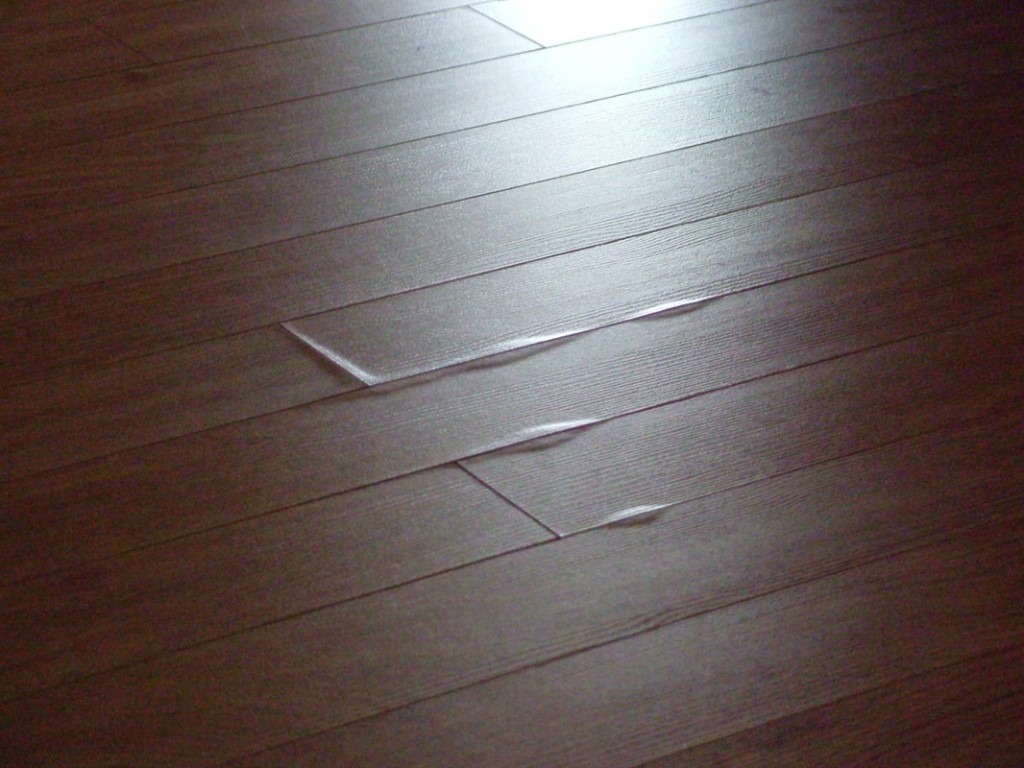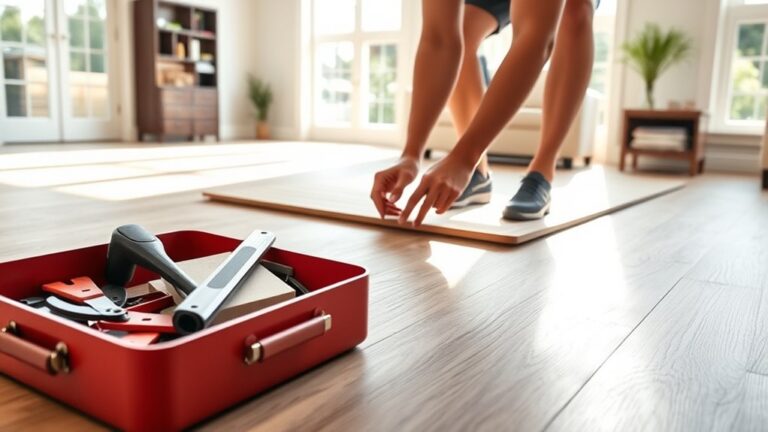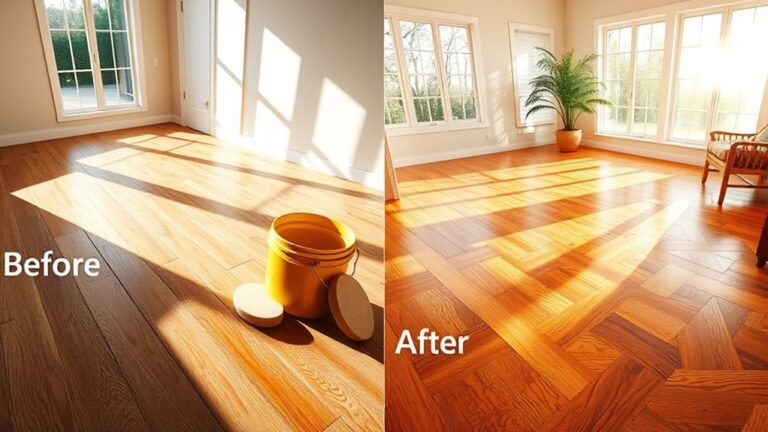To get water from under vinyl flooring, follow these steps: first, locate the source of the water and stop it from leaking. Then, use a wet/dry vacuum or towels to remove as much water as possible.
Understanding The Causes Of Water Damage On Vinyl Floors
Water damage on vinyl floors can be a common problem, but understanding its causes is essential to prevent further damage. Some common sources of water damage include:
| Leaking pipes or plumbing fixtures:
Leaky pipes or plumbing fixtures can cause water to seep into the vinyl flooring, leading to damage over time. | Flooding:
Excessive water from a flood can seep through cracks or gaps in the floor, affecting the vinyl flooring. |
| High humidity:
Excessive humidity levels in the air can cause moisture to accumulate on the vinyl flooring, potentially causing damage. | Poor installation:
Incorrect installation of vinyl floors can result in gaps or loose edges that can facilitate water penetration. |
Identifying signs of water damage is crucial for prompt action. Look out for the following:
- Warping or buckling of the vinyl flooring
- Discoloration or stains
- Mold or mildew growth
- Musty odors
- Excessive moisture or dampness
By understanding the causes of water damage and recognizing the signs, you can take appropriate preventive measures or seek professional help to mitigate the issue and protect your vinyl flooring.
Assessing The Extent Of The Damage
Assessing the Extent of the Damage
Inspecting the affected area is the first step in determining the type and severity of damage to your vinyl flooring. Start by carefully examining the area for any visible signs of water, such as discoloration or warping. Pay close attention to areas near walls, corners, or areas where water might have seeped in. Use a moisture meter to gauge the moisture content of the affected area and surrounding surfaces. This will help you determine the extent of the water damage and whether or not it has spread to other areas. Additionally, look for any signs of mold or mildew, as this can indicate prolonged exposure to moisture. By thoroughly inspecting the affected area, you can get a better understanding of the situation and develop an appropriate plan for water remediation.
Steps To Immediately Prevent Further Damage
When dealing with water damage under vinyl flooring, it is essential to take immediate action to prevent further damage. The first step is to remove any excess water accumulated. Use a wet/dry vacuum or absorbent towels to soak up the water. Make sure to gently press down on the flooring to extract as much moisture as possible.
Once the excess water is removed, it is crucial to dry the affected area thoroughly. Open windows and doors to allow proper airflow and ventilation. Use fans and dehumidifiers to expedite the drying process. Additionally, you can place towels or blankets on the floor to absorb remaining moisture. Regularly monitor the humidity levels to ensure they are within an acceptable range.
Remember, addressing water damage promptly is essential to prevent further issues such as mold growth or structural damage. By following these steps and allowing the affected area to dry completely, you can minimize the potential long-term damage caused by water under vinyl flooring.
Restoring Vinyl Floors With Minor Water Damage
To restore vinyl floors with minor water damage, it is essential to clean and disinfect the affected area properly. Start by removing any excess water with a dry cloth or mop. Once the area is dry, prepare a solution of mild detergent and warm water. Use a soft cloth or sponge to gently clean the surface of the vinyl flooring. Avoid using harsh chemicals or abrasive scrubbers, as they can damage the vinyl. After cleaning, rinse the area with clean water and dry it thoroughly. To ensure proper disinfection, you can use a mixture of water and vinegar or a commercial disinfectant. Apply the disinfectant and let it sit for the recommended time, then wipe away any excess liquid. For minor water damage, vinyl floor repair products can be used to restore the appearance and integrity of the flooring. Follow the instructions provided by the manufacturer to apply the repair product accurately. Regular maintenance and prompt action will help prevent further damage and keep your vinyl floors looking their best.
Restoring Vinyl Floors With Severe Water Damage
In cases where vinyl floors have encountered severe water damage, it becomes crucial to be familiar with the necessary steps of restoration. The first step is removing the damaged vinyl planks or tiles, taking care not to cause further harm to the subfloor. Once this is completed, it is essential to evaluate the condition of the subfloor and undertake any necessary repairs. This may involve replacing damaged areas or strengthening weak spots. It is imperative to ensure that the subfloor is adequately dried and free from moisture before proceeding with the installation of new vinyl flooring. Precise measurements need to be taken to ensure a proper fit, and adhesive should be applied according to the manufacturer’s instructions. By following these steps and paying attention to every detail, it is possible to restore vinyl floors with severe water damage and enjoy a fresh and renewed appearance.

Tips For Preventing Future Water Damage On Vinyl Floors
Tips for Preventing Future Water Damage on Vinyl Floors:
Proper maintenance and cleaning are key to preventing water damage on vinyl floors. Here are a few tips to help you keep your floors in top shape:
- Regularly sweep or vacuum the floor to remove dirt and debris.
- Wipe up spills and moisture immediately to prevent water from seeping into the flooring.
- Use a mild cleaning solution specifically designed for vinyl flooring to clean the surface.
- Do not use excessive amounts of water when mopping the floor.
- Avoid using harsh chemicals or abrasive cleaners that can damage the vinyl.
Additionally, it is recommended to use water-resistant rugs or mats in areas prone to water exposure, such as near entryways or in bathrooms. These protective coverings can help absorb moisture and prevent it from seeping into the vinyl flooring.
Seeking Professional Help For Extensive Water Damage
When faced with extensive water damage under vinyl flooring, it is important to know when to seek professional help. Water damage restoration can be a complex task and it is best to leave it to the experts. Calling a reliable water damage restoration company is crucial in such situations.
- There is a significant amount of water under the vinyl flooring
- The water has been present for more than 24 hours
- The water damage covers a large area
- There are signs of mold or mildew
Choosing a reliable water damage restoration company with experience in dealing with water damage situations is essential. Look for companies that are certified, have a good reputation, and offer 24/7 emergency services. Make sure to inquire about their insurance coverage and the techniques and equipment they use for restoration.
Frequently Asked Questions For How To Get Water From Under Vinyl Flooring
How Do I Remove Water Trapped Under Vinyl Flooring?
To remove water trapped under vinyl flooring, you can start by locating the source of the water and fixing any leaks. If there is a small amount of water, you can use a wet/dry vacuum to extract it. For larger amounts of water, you may need to remove the vinyl flooring and dry the subfloor thoroughly to prevent mold and damage.
Can Water Damage Vinyl Flooring?
Yes, water can damage vinyl flooring. If water seeps under the vinyl, it can cause the adhesive to loosen and the flooring to warp or bubble. It can also lead to mold and mildew growth. It’s important to address water damage quickly to prevent further issues and ensure the longevity of your vinyl flooring.
How Long Does It Take For Vinyl Flooring To Dry After Water Damage?
The time it takes for vinyl flooring to dry after water damage can vary depending on the severity of the damage and the conditions in your home. In general, it can take anywhere from a few days to a week for vinyl flooring to dry completely.
Proper ventilation and the use of fans or dehumidifiers can help speed up the drying process.
Conclusion
To effectively handle water damage under vinyl flooring, it is crucial to act quickly and follow the right steps. From identifying the source of the water to removing the flooring and addressing any underlying issues, this guide has provided you with practical tips and solutions.
Remember, early detection and prompt action can save you from potential hazards and costly repairs. By taking the necessary precautions, you can ensure the longevity and durability of your vinyl flooring.




